The Princes Street Gardens sit in the centre of Edinburgh, in the shadow of Edinburgh Castle. They were created in the late 1700s and early 1800s after a loch, originally part of the castle’s defences, was drained.
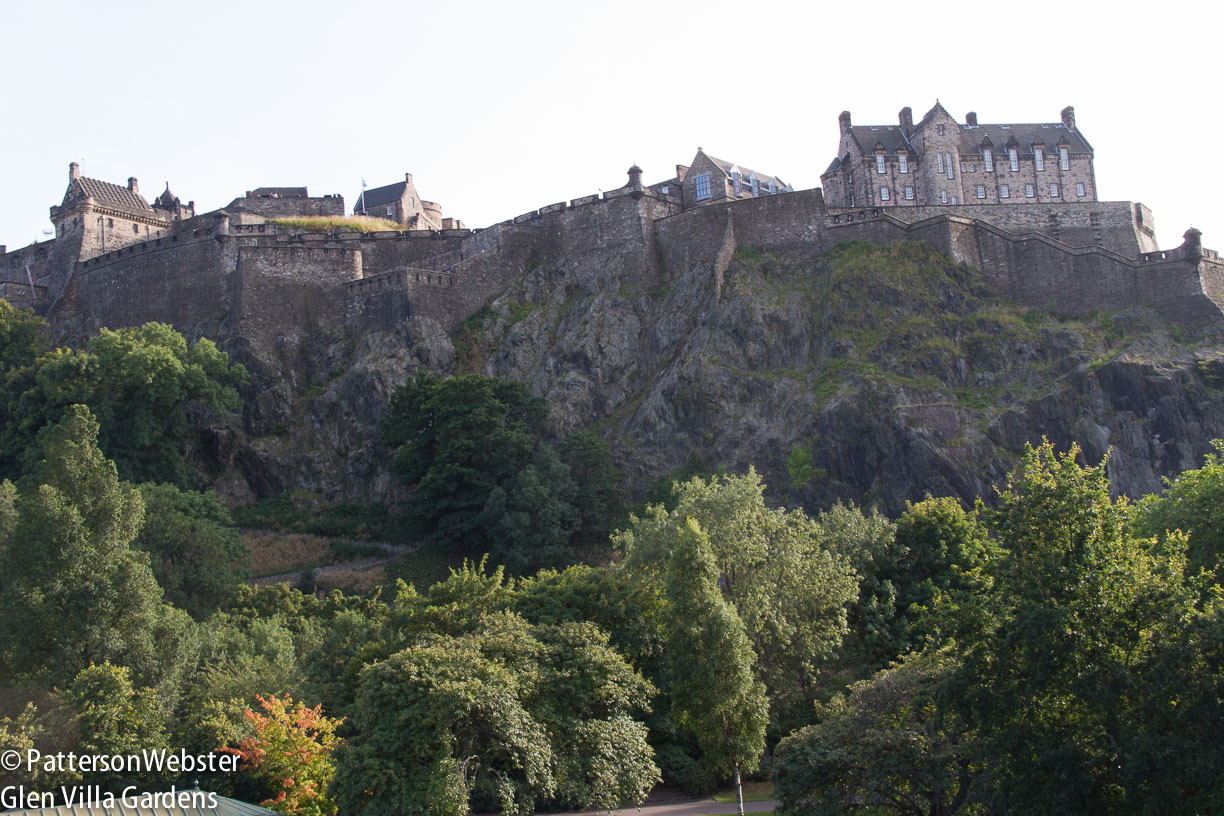
The castle hill was a volcano 350 million years ago. Railway tracks run in the moat that used to protect the castle.
The gardens are divided in two sections, East and West, that together cover some 37.5 acres (154,000 sq metres). They are the best known public park in Edinburgh and, judging from the number of people, they are also the best used.
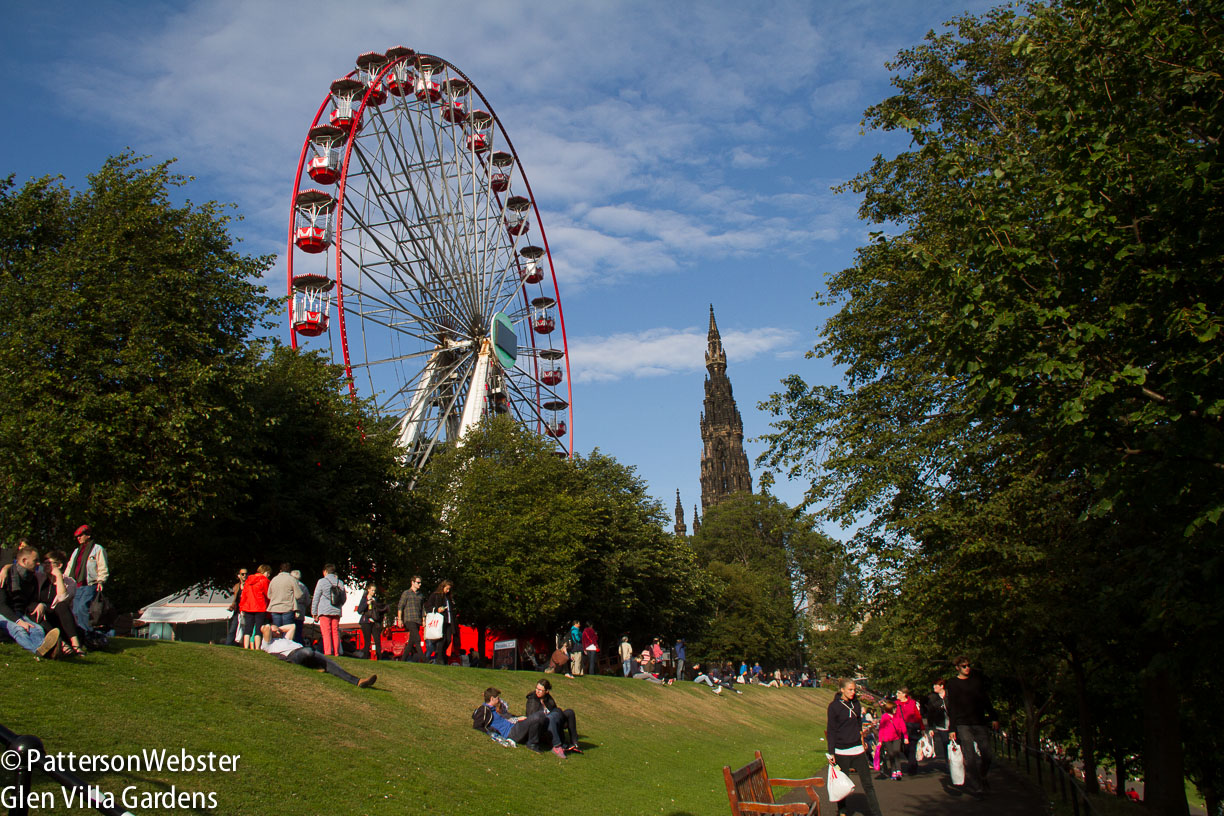
Not many people were using the Ferris wheel but lots were lounging on the grass and enjoying the warm weather.
On a sunny Saturday afternoon, the gardens were full of people, strolling, lounging on the grass, eating ice cream and admiring the flowers. And when it came to flowers, there was much to admire.
First and foremost was the floral clock.
The clock itself is quite magnificent, an array of succulents and annuals that is delightfully colourful. Edinburgh was the first city in the world to be recognized by UNESCO as a City of Literature, and the number and quality of writers who started life in Edinburgh is worth noting. They include — in no particular order — Sir Arthur Conan Doyle, Robert Louis Stevenson, JK Rowling, Sir Walter Scott, Muriel Spark, J. M. Barrie, Adam Smith, Alexander McCall Smith, David Hume and Ian Rankin. This wealth of writers, the power of books and the range of ideas that results is acknowledged florally.
Not all the municipal plantings were as interesting as the floral clock. A few left a great deal to be desired.
Other parts, though, were spectacular. I loved the huge fuchsia shrubs that lined a walkway …
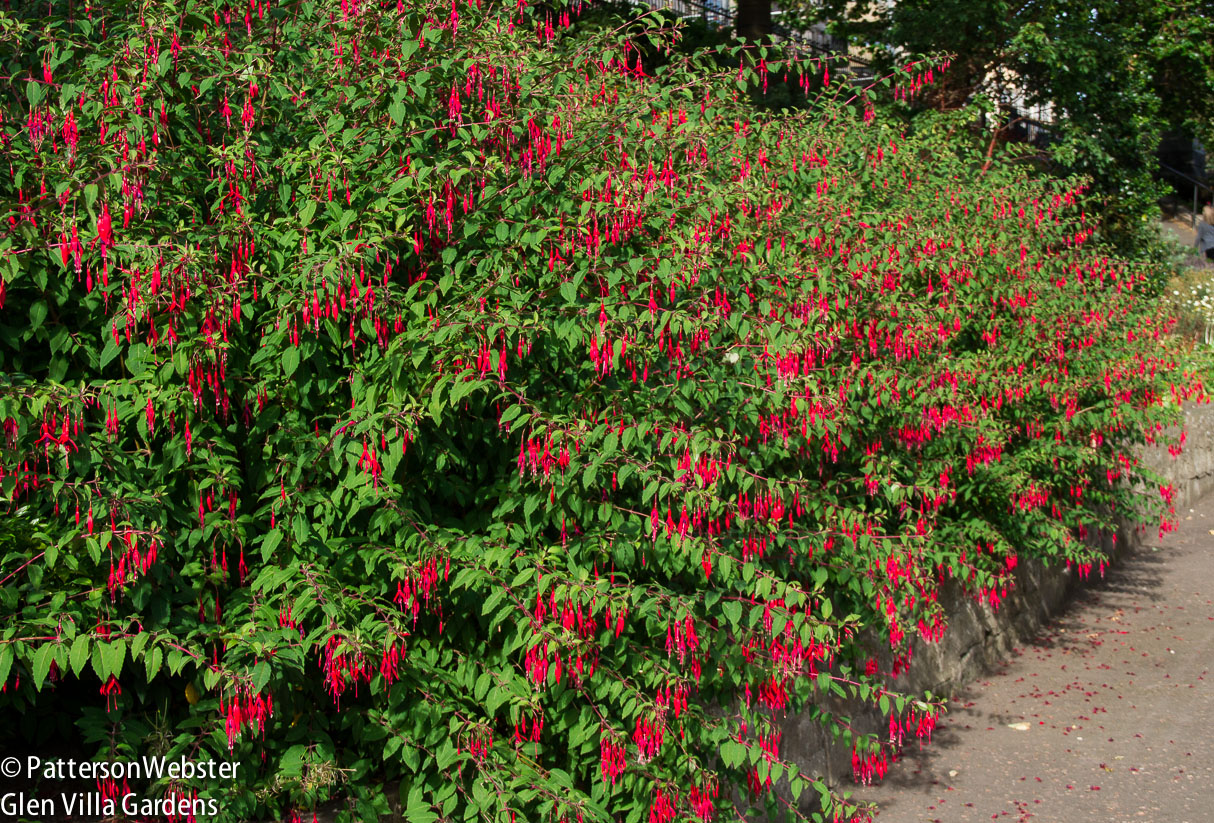
For those of us who plant fuchsia as a small annual, seeing an entire shrub is a sight worth recording.
… and the masses of roses, still in full bloom.
I was amused by the thistles that overwhelmed one planting bed.
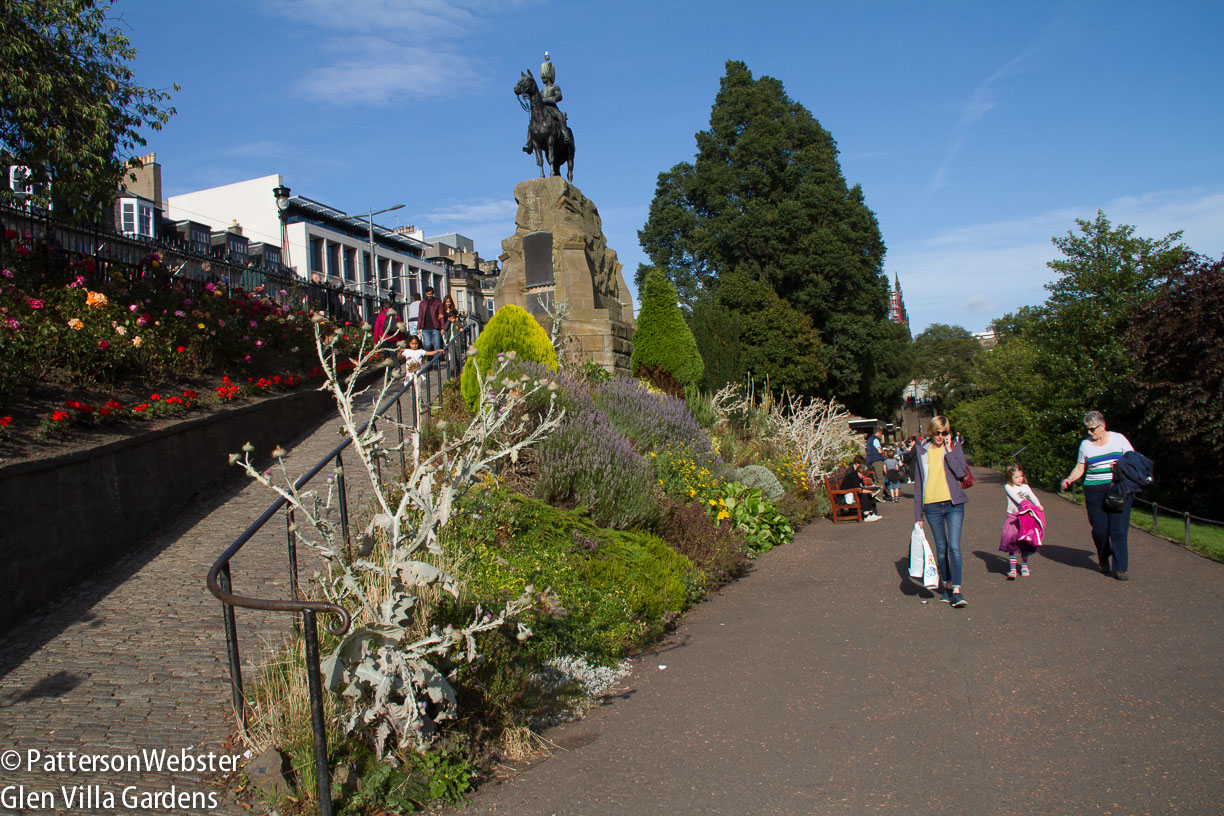
Talk about over-grown! The silvery thistle is out of proportion with the rest of the plantings, but so much so that it made me laugh.
Thistles are Scotland’s emblematic flower, and up close the blooms are wonderful. I saw two varieties, one in the bed shown above.
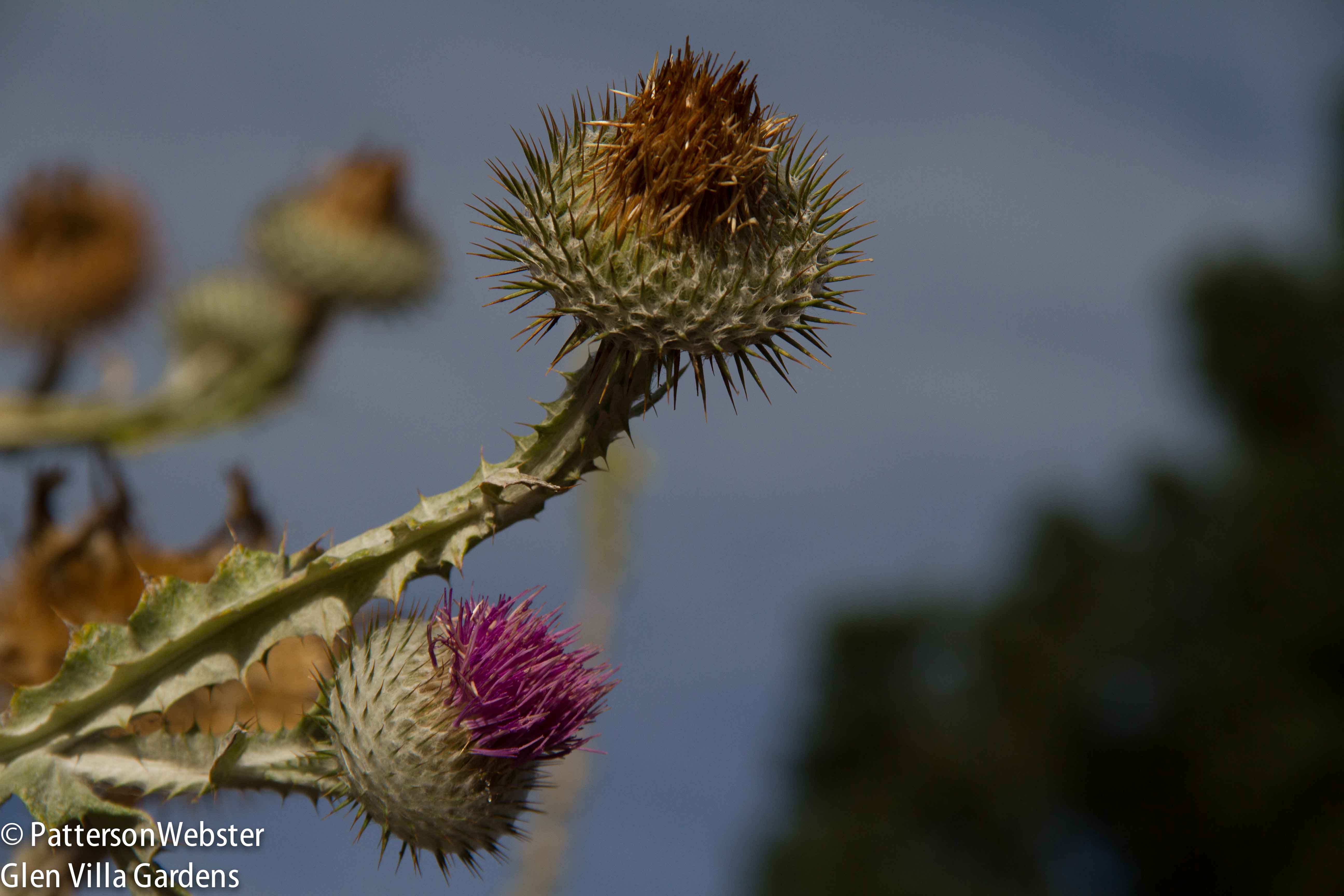
Nearing the end of its life, this thistle is still interesting to look at. Or at least I find it so.
The second variety was bolder, its form more like an artichoke and its colour much bluer.
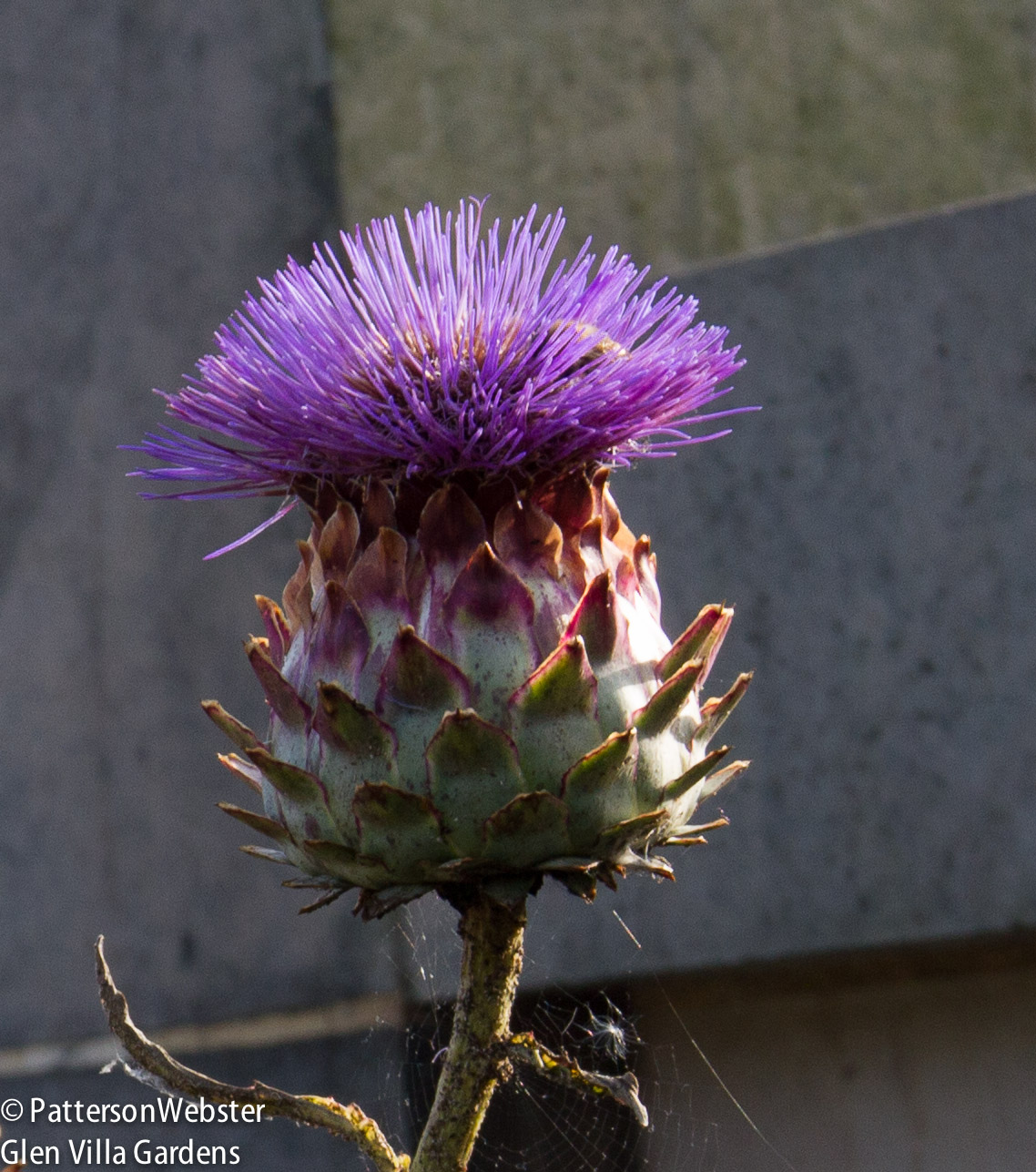
I only wish the Canadian thistles that pop up everywhere in my garden in Quebec were half as attractive.
The Gardens are full of statues and memorials. One engraved RLS sits among a grove of birch trees — spelling out the writer’s name was unnecessary, I guess. (Plus it would have required a much larger stone, and we all know the jokes about frugal Scots.) A large stone erected by the Norwegian brigade and other units thanks the Scots for their hospitality and friendship during the hard years of WWII. A small stone honours Aung San Suu Kyi, who was given the freedom of the city in 2005.
But my favourite statues had to be the living ones, spread out on the grass, enjoying the sunshine and shadows at the end of the day.
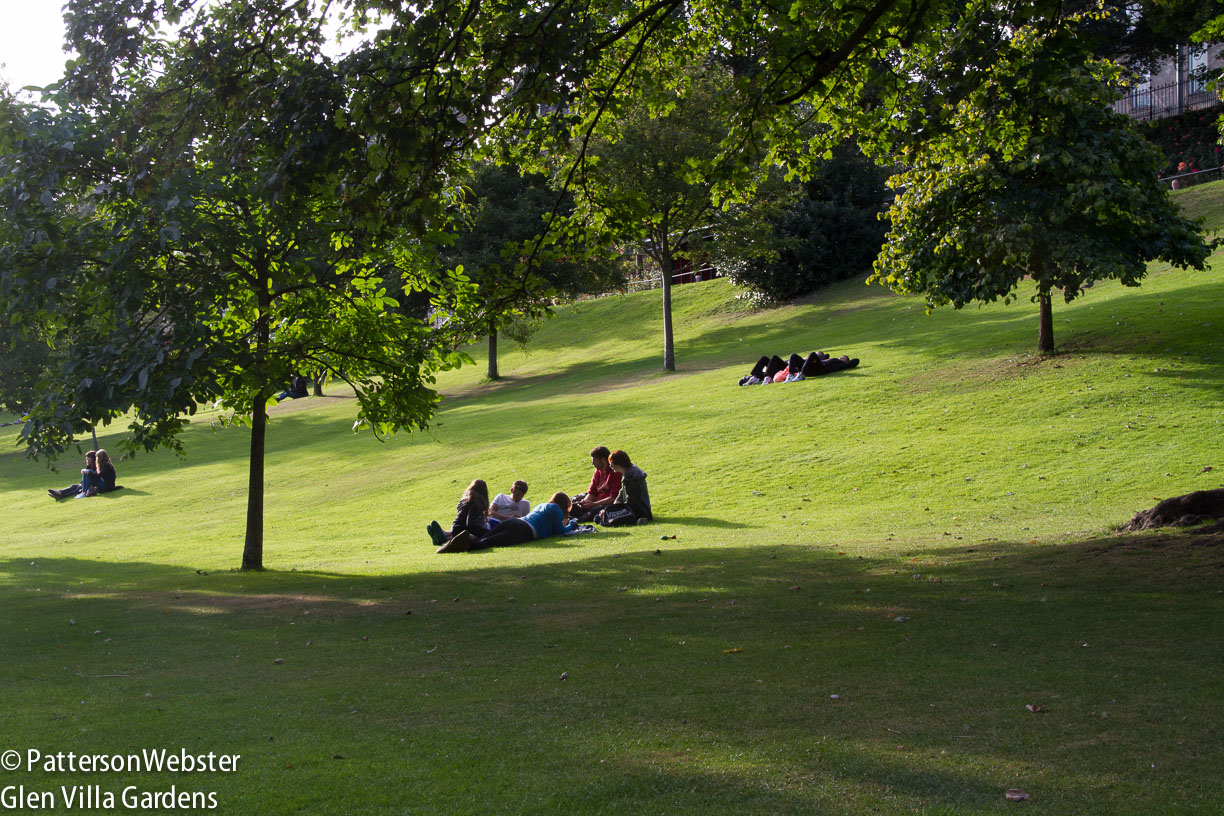
Seeing the people lying on the grass or strolling through the grass made me think of Seurat’s painting, Sunday Afternoon on the Grande Jatte. An umbrella or two and a man in a bowler hat would have made the scene picture perfect.
It’s wonderful when a municipal park is so well used. Bravo, Edinburgh!


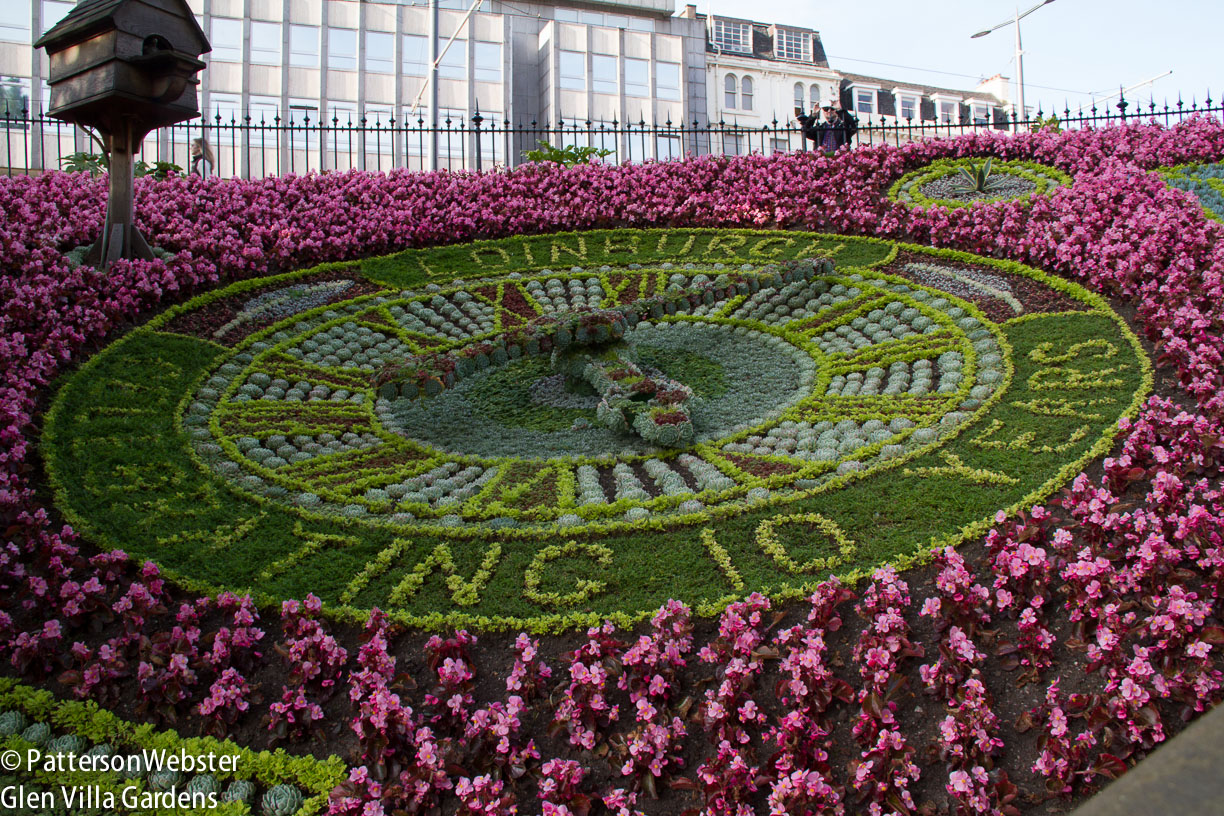
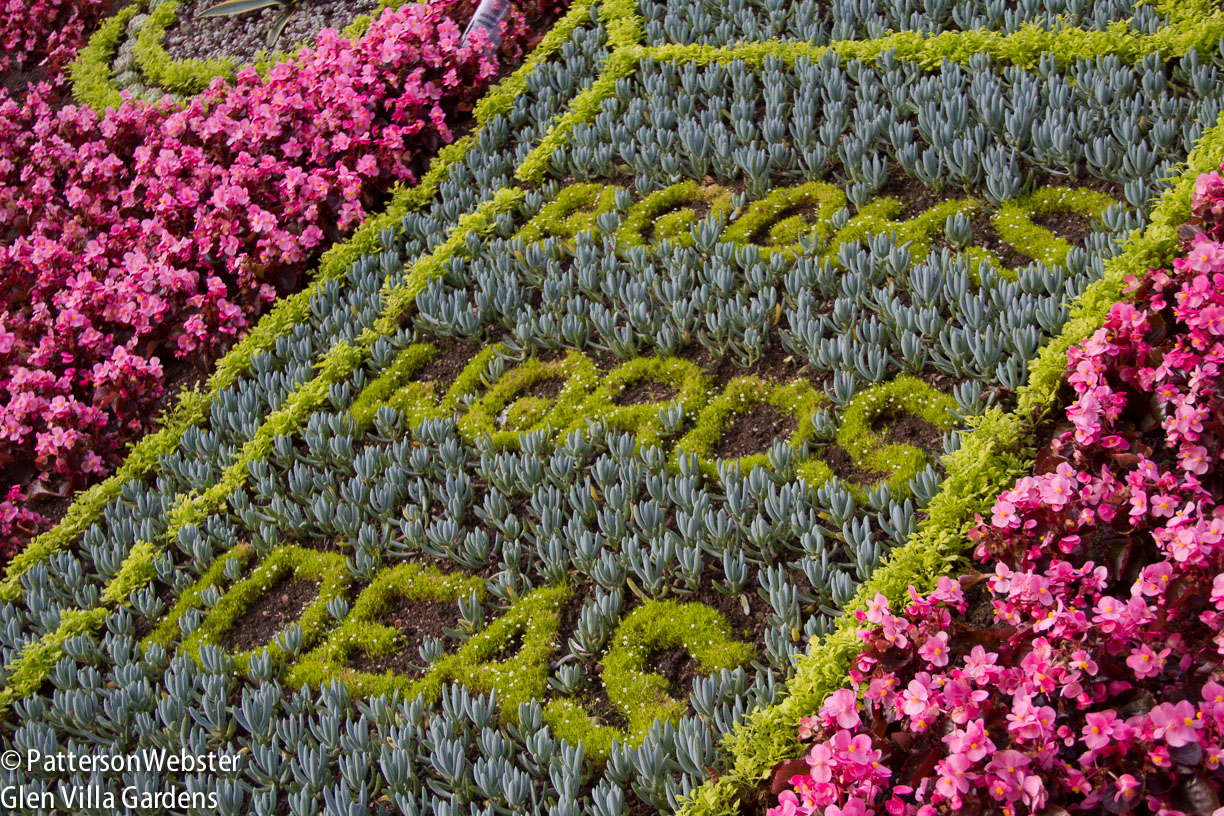
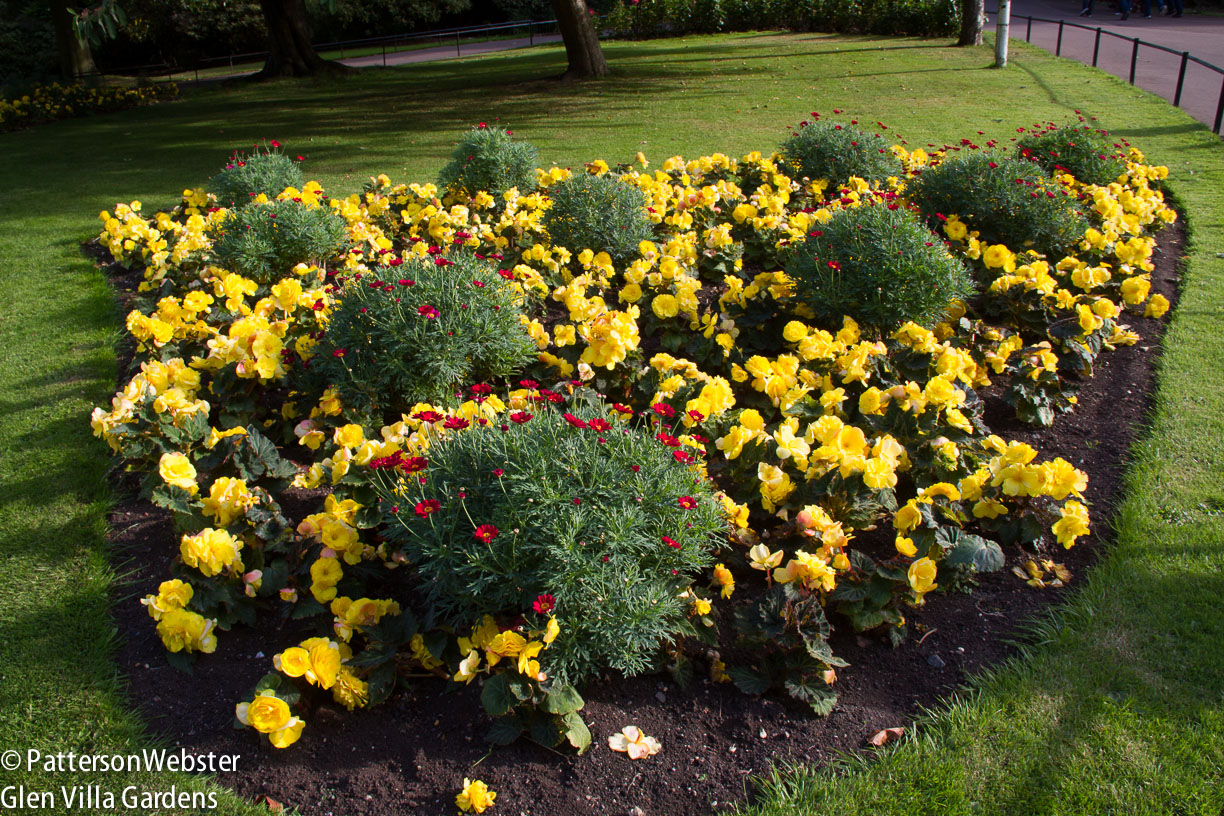
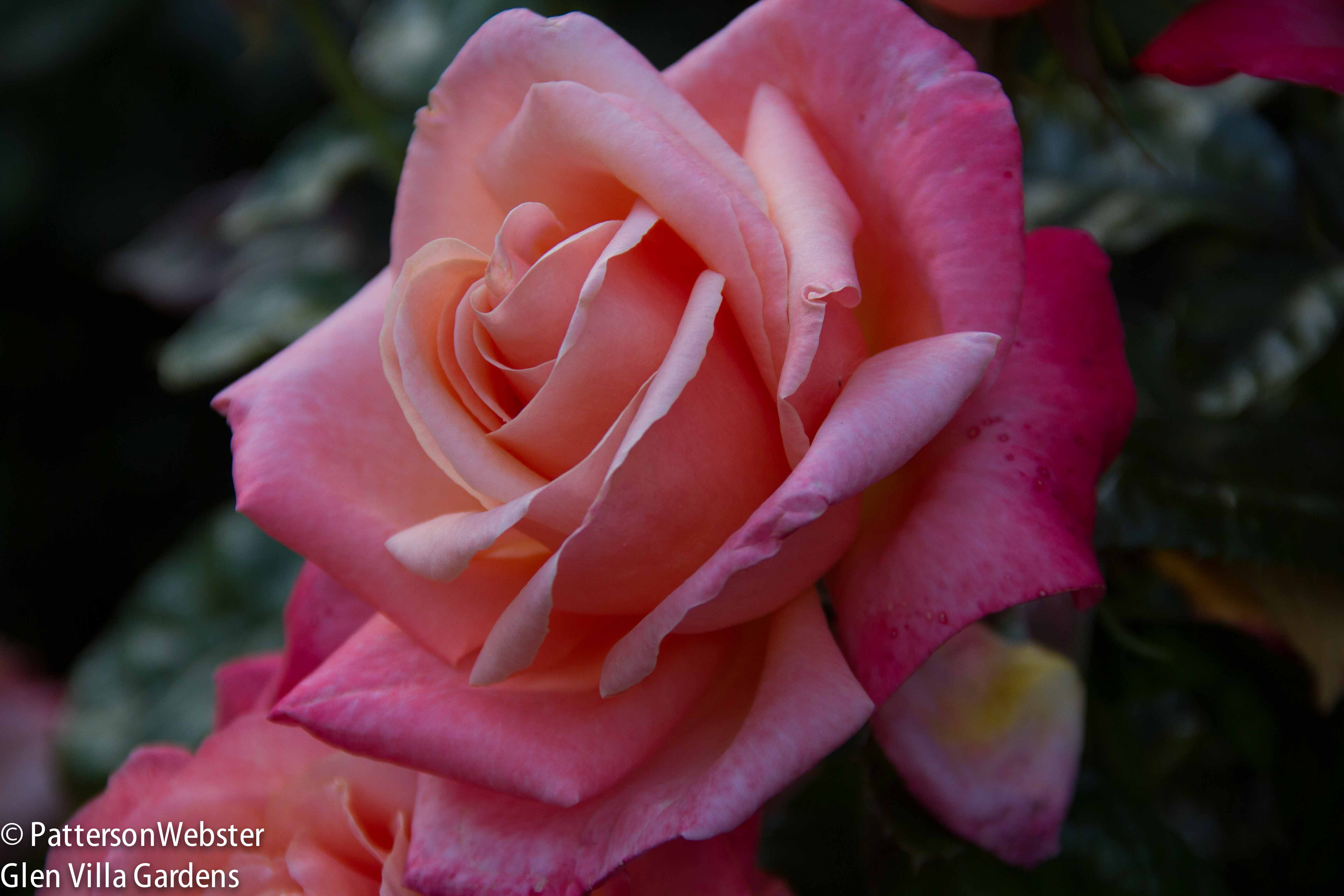



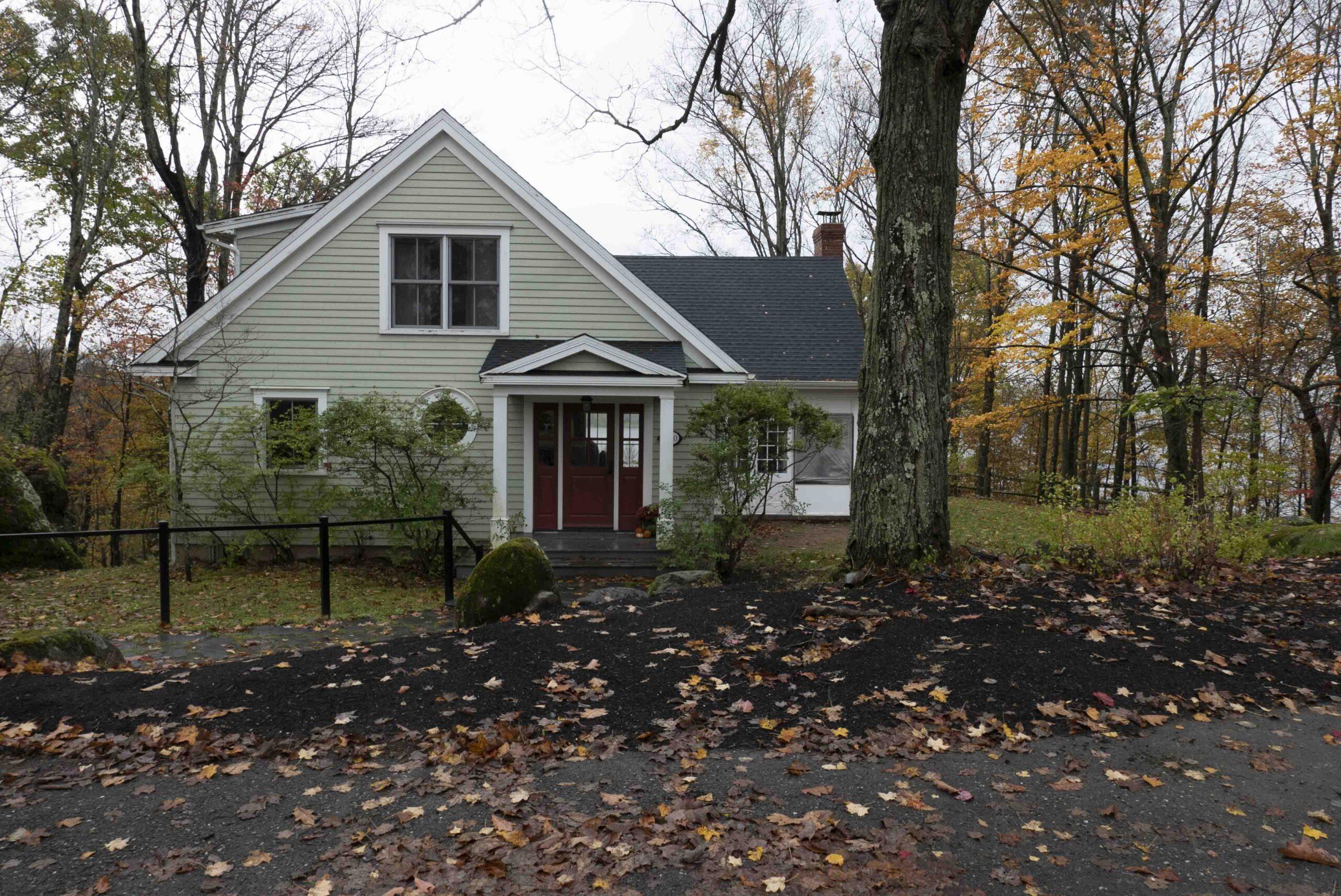
Loved the fuchsia!
So did I.
What a wonderful park. That sense that the park was part of the life of so many people of the city was also something we loved about the Luxembourg Gardens. Funny to see all those thistles, not something you would see here, at least not on purpose!
It has been fabulous to see how many people of all ages are using the public parks. They are clearly well-loved spaces. And I keep seeing thistles everywhere!
I love these gardens – the name, the location, the content, especially the flower clock. Well done Edinburgh. I look forward to going back for another pea
The flower clock was delightful, Amy. As was so much we saw in Scotland. Lots of wonderful surprises.